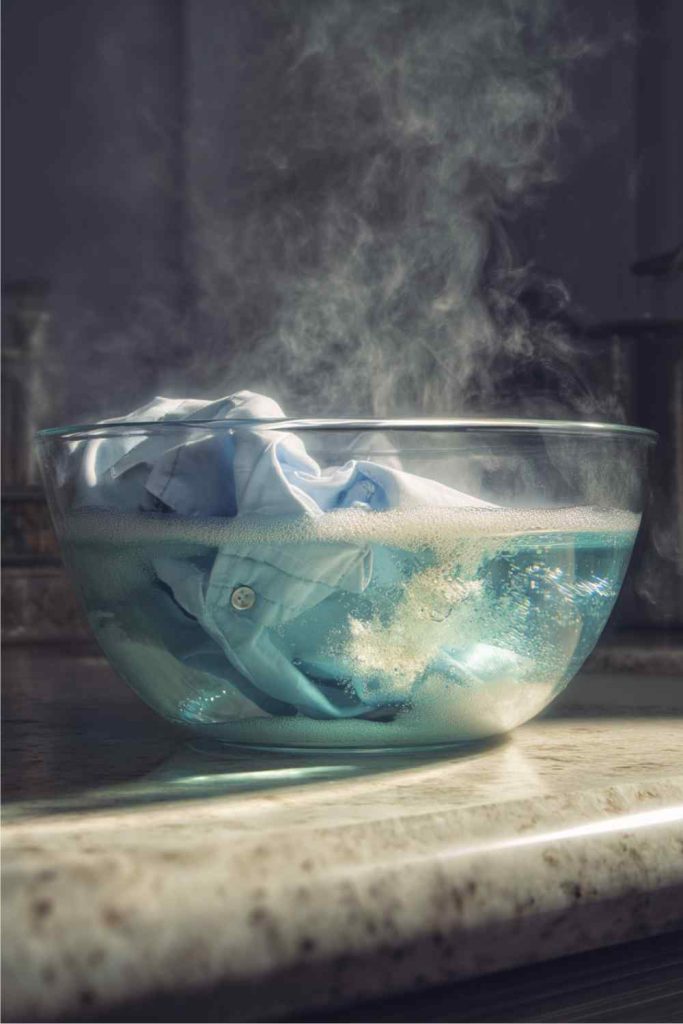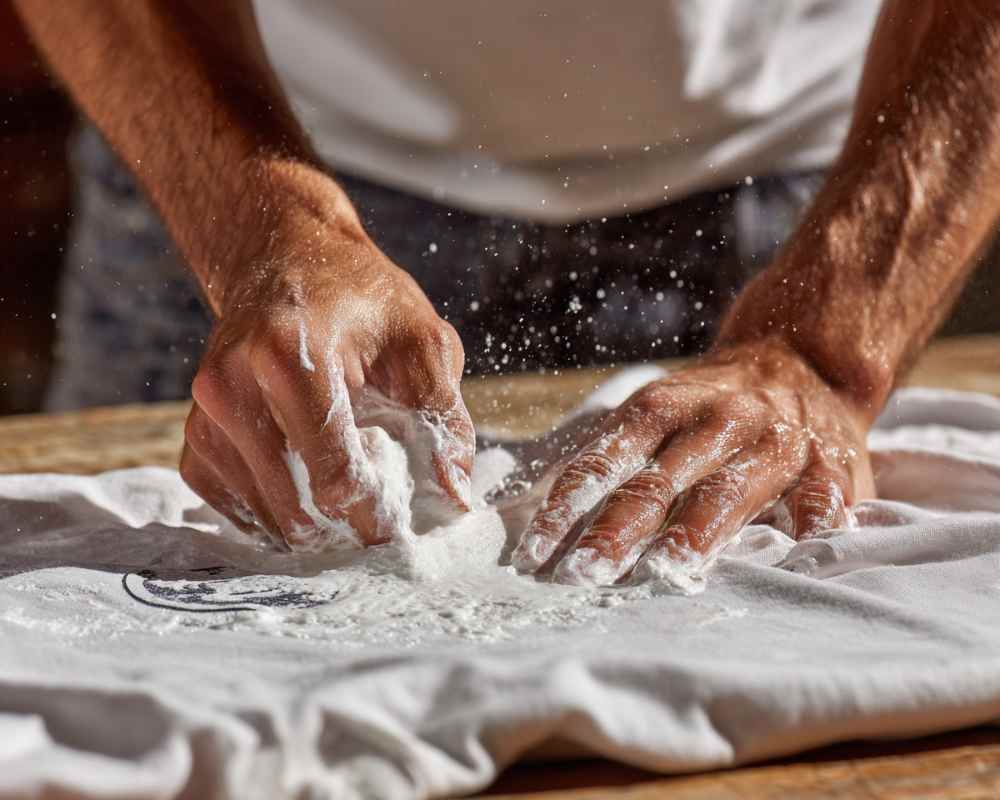Proven Methods, Case Studies & Preventive Care
Introduction
A fresh spill is annoying, but a stain that’s been sitting for days, or worse, baked in by the dryer, is another beast entirely. These are what we call set-in stains. Unlike new marks that often wash out with a bit of detergent, set-in stains cling stubbornly to fabric fibers. They’ve dried, bonded, and in many cases, reacted chemically with the material.
Why do they stick around? Heat from washing machines, irons, or dryers can “cook” a stain in place. Pigments and proteins settle deep into the weave. And every hour that passes before you treat it makes it harder to budge. Still, most set-in stains aren’t a lost cause. With the right tools, patience, and know-how, you can rescue clothes you thought were ruined. This guide walks through science backed methods, real-world examples, and preventive habits to keep your wardrobe in better shape.
Understanding Set-In Stains
Types of stains and how they set in
- Protein-based (blood, sweat, dairy, egg)
These coagulate under heat or over time. Once hardened, they latch onto fibers. - Oil and grease (cooking oil, butter, lipstick, sunscreen)
Hydrophobic by nature. Water alone can’t cut through, so surfactants or solvents are essential. - Tannin-based (coffee, tea, wine, juice)
Natural pigments seep into fibers and darken when heated. - Dyes and pigments (ink, markers, berries)
Artificial or natural coloring agents bond aggressively with fabrics. - Combination stains (pasta sauce, sweat mixed with deodorant)
Layers of protein, oil, and pigment all at once, making them particularly stubborn.
Factors that affect permanence
- Time: The longer it sits, the more it binds.
- Heat: A quick run in a hot dryer often locks a stain in for good.
- Fabric type: Natural cotton holds stains differently than synthetics like polyester. Delicates such as silk or wool are especially vulnerable.
- Previous treatments: Using the wrong cleaner first can make stains harder to treat later.
- Stain chemistry: Some dyes and tannins literally act like fabric dyes once set.
The Science & Tools Behind Stain Removal
Cleaning agents and why they work
- Enzyme cleaners: Break down proteins and starches. Ideal for blood or sweat.
- Oxygen bleach (sodium percarbonate): Releases oxygen to lift stains. Safer than chlorine bleach and effective after long soaks.
- White vinegar + baking soda: Acid and alkali working together. Effective for many common set-ins.
- Solvents (rubbing alcohol, acetone): Loosen dyes and inks, but test colorfastness first.
- Dish soap and degreasers: Cut through grease, oils, and food-based fats.
Water temperature and agitation
- Cold water: Prevents proteins from cooking into fabric. Essential for blood and dairy.
- Warm to hot water: Helps dissolve oils and activates oxygen bleach, only if the care label allows.
- Agitation: Gentle scrubbing or stirring during a soak improves penetration.

Step-by-Step Methods to Remove Set-In Stains
Preliminary checks
- Always read the care label.
- Test cleaners on a hidden seam.
- Blot or scrape off any residue, don’t rub it in deeper.
- Identify the stain type before choosing a method.
Method 1: Oxygen bleach soak
- Dissolve a scoop of OxiClean, Oxo-Brite, or Biokleen in hot water (if fabric allows).
- Submerge stained item for 5–6 hours or overnight for stubborn spots.
- Stir occasionally to keep the solution active.
- Wash as normal. Check before drying. Repeat if needed.
Method 2: Vinegar + baking soda paste
- Saturate stain with white vinegar.
- Mix baking soda into a paste and rub gently into fibers.
- For heavy stains, combine vinegar and detergent in water, soak overnight.
- Wash, then inspect before heat drying.
Method 3: Stain-specific treatments
- Blood: Cold water soak, enzyme detergent, hydrogen peroxide for whites. Never hot water.
- Grease/Oil: Dish soap directly on stain, gentle scrubbing, warm wash. Avoid heat until stain fades.
- Coffee/Tea/Wine: Blot immediately, cold soak, pre-treat with detergent or oxygen bleach. Club soda or salt can help with wine.
- Ink/Dye: Dab rubbing alcohol from the back side. Wash after testing colorfastness.
Method 4: Repeat and recheck
- If stain lingers after wash, air-dry instead of tumble drying.
- Repeat treatment as needed, heat is your enemy until the mark is gone.

Examples
- Oxygen bleach success: Clothes restored after a 6-hour soak with OxiClean.
- Vinegar + baking soda: Effective for older food stains, though multiple cycles were sometimes needed.
- Coffee stains: 15-minute soak in lukewarm water + dish soap + vinegar, then enzyme detergent wash.
- Grease stains: Dish soap first, followed by vinegar rinse.
- Blood stains: Cold soak, enzyme cleaner, peroxide for stubborn patches.
- Reddit threads show success with very hot water + OxiClean overnight soaks.
- Bloggers report baking soda working well when dusted on small oil stains and brushed off before washing (Lalalisette).
Best Practices & Mistakes to Avoid
Preventive care
- Treat spills quickly, minutes matter.
- Always check clothes before tossing them in the dryer.
- Keep a stain remover pen or spray handy.
- Follow detergent type to stain type (enzymes for protein, degreasers for oil).
- Stick to care labels for temperature and bleach safety.
Common mistakes
- Hot water on blood or dairy stains. It cooks them in place.
- Aggressive scrubbing, which damages fibers and spreads the stain.
- Skipping the pre-treat step.
- Drying before checking if stain is fully gone.
FAQs
Can all set-in stains be removed?
No. Some pigments and dyes permanently alter fabric.
Is oxygen bleach safer than chlorine bleach?
Yes. It’s gentler on colors and fabrics but still test for colorfastness.
How long should I soak a stain?
Five to six hours in oxygen bleach is typical. Overnight for tough ones.
What water temperature should I use?
Cold for proteins, warm/hot for grease, always check care label.
Commercial remover or household items?
Both work. Household items are cheaper, but commercial products often act faster.
How many attempts before giving up?
Two to three serious treatments. If it hasn’t budged, odds are low.
Can I bleach colored clothes?
Only with color-safe oxygen bleach. Chlorine bleach is for whites only.
Summary & Action Plan
- Identify stain and fabric.
- Blot excess.
- Choose proper pre-treatment.
- Soak as needed.
- Wash, air-dry, repeat if necessary.
Keep on hand: enzyme spray, oxygen bleach powder, vinegar, dish soap, a soft brush, and a stain stick for emergencies.
Regular upkeep matters too. Wash sweat and deodorant stains before they build up, don’t let dirty laundry sit too long, and give your detergent the right environment – time, water, and temperature – to do its job.
Case Study: Real-Life Mini Tutorial
Blood on cotton shirt
- Cold soak for 30 minutes.
- Enzyme detergent gently brushed in.
- Overnight oxygen bleach soak.
- Warm wash cycle.
- Air-dry, repeat if needed.
Grease on polyester blend
- Dish soap rubbed in.
- Warm wash (if label allows).
- Air-dry, inspect.
- Second treatment with solvent if faint residue remains.
Conclusion
Set-in stains are stubborn but rarely unbeatable. With patience, the right cleaner, and the discipline to avoid rushing clothes into the dryer, most fabrics can be salvaged. Some garments will always be exceptions, especially those with pigment or dye staining, but consistency in stain treatment habits saves more clothes than it loses.


